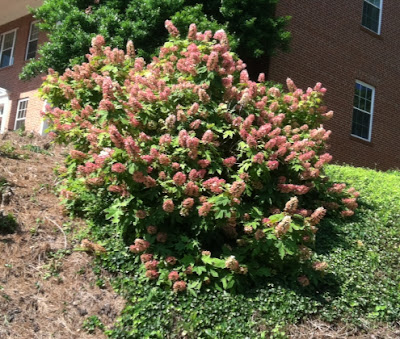 |
| Pink Muhly Grass at Callaway Gardens when my Children were small |
The most beautiful of all the ornamental grasses to me is Muhlenbergia capillaris, usually called Pink (or Purple) Muhly Grass.
When not blooming, Pink Muhly Grass just disappears into the background. No one would notice it at all. But in late Summer or early Fall when the pink to purple seed heads develop, all I can think is WOW!
Usually Pink Muhly Grass comes into bloom in September but is blooming much later this year, I'm guessing due to the drought. The plants are just now in full bloom. Everything has behaved differently this year. As I wrote in my last post, we've had no rain in our Georgia garden in more than two months. None.
That just goes to show you what a tough plant this is. Most ornamental grasses are truly easy to grow, requiring nothing special in the way of soil or water. But most ornamental grasses just don't appeal to me. I love flowers.
Pink Muhly Grass gives me the look of flowers in the big beautiful fluffy clouds that look like cotton candy held high above the foliage. When in bloom, Pink Muhly Grass can be in excess of 3 feet tall. This plant is truly spectacular in the Fall garden. And by the way, Muhlenbergia capillaris comes in White too. What I mean is there is white blooming form, but to me it is not so eye-catching.
Muhlenbergia is a clumping grass so it will not spread all over your garden. It is a very well-behaved plant native to the Eastern United States, and is hardy in USDA Zones 5-10.
Muhly Grass also attracts beneficial insects. I'm not sure why, but ladybugs like it.
Muhlenbergia capillaris needs very well-drained soil, so I recommend mixing in some compost when you plant it. And although it is drought tolerant once established, water it weekly during its first Summer in your garden.
Pink Muhly Grass is spectacular enough to be a specimen plant, but I like the drama of a large mass of them, if you have the space. It is particularly lovely if you can plant at the top of a hill where it will be backlit by the sun.






























